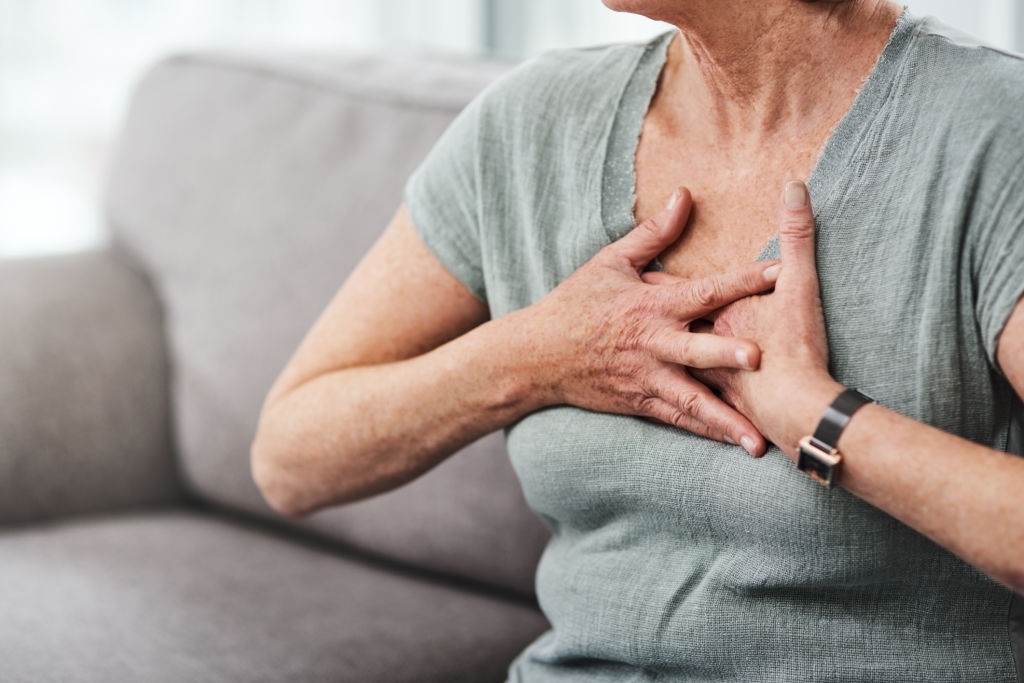Acute bronchitis is a localized or diffuse inflammation of the bronchi . The most common cause is infectious: viral or bacterial . There is no radiologically detectable anomaly. When these appear, it is because the inflammatory process reaches the pulmonary alveoli. Clinically, acute bronchitis is manifested by a more or less intense febrile syndrome, accompanied by cough. The evolution can be interspersed with complications in the elderly, cardiac or chronic respiratory failure.
In children, acute bronchitis is often concomitant or a consequence of infections in the ENT sphere, and may be accompanied by lung damage. Homeopathic medicines are different depending on whether the patient is in the beginning phase , the state phase or the resolution phase .
Period of onset of bronchitis
At this stage of bronchitis, there is a feverish state with a dry, nonproductive cough.
Aconitum napellus :
After a sudden cooling appears a high hyperthermia with sudden onset . The skin is red and dry . The patient has a great thirst for large quantities of cold water. The cough is dry and painful . Generally sthenic and vigorous , the subject can be agitated, even anxious.
Dosage : Take 5 granules every hour in 7 or 9 CH. The indication is of short duration for this drug of the first stage of the inflammation: it stops as soon as the sweats appear to give way to:
Belladonna :
This medicine corresponds to the following clinical picture: hyperthermia with sudden onset with significant cephalic congestion . The face is red, the sweats profuse . The patient is dejected, but hyperesthetic to noise, to light, to shocks, often with a pulsating headache.
Fever may be fluctuating . The cough is dry, spasmodic , painful, with dryness of the throat.
Dosage : Take in 7 or 9 CH, 5 granules every 2 hours. Space following improvement.
During this early period, the dry and unproductive cough will be improved, depending on its particular modalities, by:
Rumex crispus :
Dry, tiring cough, caused by an itch in the suprasternal hollow, with impression of tickling of the suprasternal fossa and sometimes feeling of laryngo-tracheal abrasion. This cough is aggravated by inhaling cool air , going from hot to cold, proportional to the volume of air inspired, calmed by closing the mouth or by covering the nose and mouth .
Dosage : Take Rumex 5 CH, 5 granules at the rate of fifths.
Sticta pulmonaria :
Spasmodic dry cough, with burning burning sensation in the trachea. Worse at night or in a cool room. Improved while sitting. At the same time as this cough, there may sometimes be a redness of the cheeks, but above all a dryness of the mucous membrane of the nose, with the impression of a blocked nose at its root , which is the seat of a pinching pain, “as by a pair binoculars”.
Dosage : Take Sticta 5 CH, 5 granules every 2 or 3 hours depending on the acuity of the case. Space following improvement.
Bryonia :
Febrile state of progressive onset . Dry cough, caused or aggravated by the slightest movement , even respiratory movements. The patient seeks immobility. He has an intense thirst . He sweats profusely, which relieves him.
Dosage : Take in 7 or 9 CH, 5 pellets 3 to 4 times a day. Space following improvement.
Sundew :
Spasmodic dry cough, especially at night , when lying down, sometimes with cyanosis of the face and wheezing. Associated costal or abdominal pain, improved by hand pressure.
Dosage : Take 15 or 30 CH once a day until the cough stops. Low or medium dilutions can cause aggravation.
State period of a bronchitis
At this stage, the cough becomes productive, bringing back a mucous or muco-purulent sputum.
Ferrum phosphoricum :
The temperature is low, in a weak , hyposthenic subject . The patient easily presents alternating congestion and pallor of the face, and is subject to epistaxis . Spasmodic cough, first dry, is very painful , with burning sensation in the chest . Worse in cold air or when lying down. Then appears a yellow, insignificant expectoration, sometimes streaked with blood.
Dosage : Take in 7 or 9 CH, 5 pellets 3 or 4 times a day. Space following improvement.
IPECA :
The cough is spasmodic, accompanied by nausea and vomiting . Worse on motion, better on rest, may be accompanied by epistaxis . There is increased mucus in the bronchi, with rales all over (rhonchus and/or sibilances), but little expectoration . Under these conditions, the emetic cough can become dyspneic or asthmatic .
Despite the associated digestive symptoms, the tongue is clean or lightly loaded. Nausea is accompanied by hypersalivation, with absence of thirst .
Dosage : Take in 7 or 9 CH, 5 pellets at the rate of fifths.
Mercurius solubilis :
Productive, fatty cough, with muco-purulent expectoration , worse at night in the heat of bed. The patient has shivers all over the skin. There are concomitant bucco-pharyngeal signs : broad, flaccid, thick, spreading tongue, bearing the imprint of the teeth on the edges and covered with a thick, yellowish coating. Foul breath, hypersalivation, intense thirst . ( Ipecac also has hypersalivation, but the tongue is clean or lightly loaded with no thirst).
Dosage : Take in 7 or 9 CH, 5 granules twice a day.
Hepa sulfur :
With this drug, the cough is dry at first, then there is a suppurative tendency with abundant purulent expectoration and moist rales.
Dosage :
The action of Hepar sulfur vis-à-vis the suppuration is variable with the height of the dilution used:
- Low dilutions (4-5 CH) promote suppuration and have a centrifugal role (as with low diluted Sulfur , possible aggravation of suppuration in a closed cavity: otitis for example). In 5 CH, Hepa sulfur promotes expectoration at the beginning. Take 5 pellets twice a day.
- High dilutions (15-30 CH) dry up suppuration . Hepar sulfur 15 CH dries up sputum. Take 5 granules 1 to 2 times a day.
You can also use the “ladder doses” technique taught by Charles Rousson ; it consists of taking:
- Hepar sulfur 9 CH, 1 dose on the first day
- Hepar sulfur 12 CH, 1 dose on the second day
- H. sulfur 15 CH, 1 dose on the third day
- H. sulfur 30 CH, one dose on the fourth day.
Each intake of Hepar sulfur will be preceded 2 or 3 hours before by that of a dose of Pyrogenium 7 or 9 CH.
Pyrogenium :
Indicated to avoid superinfection, this drug can also be prescribed almost systematically. It is a biotherapeutic prepared from septic autolysate of beef, pork and human placenta, the animal experimentation of which causes a febrile septic state.
Dosage : Apart from the previous case, take in 7 or 9 CH, 5 granules once a day, until symptoms disappear.
Period of resolution of bronchitis
As the fever subsides in lysis, the cough improves, but persists, as does the expectoration. To hasten healing, it is necessary, at this stage, to think about:
Pulsatilla :
Dry cough at night , which compels one to sit down, and fatty cough during the day , with thick yellowish mucus. Better by movement and fresh air.
Sulfuriodatum :
Violent, tiring cough, producing abundant, thick mucus, difficult to expel. The patient needs fresh air.
Practically, these last 2 drugs can be systematically prescribed after acute bronchitis. They seem to promote an emollient, decongestant and anti-inflammatory reaction which corresponds to the pathophysiological needs encountered at the end of acute infections of the respiratory mucous membranes.
We can therefore always take, in the course of such affections, for a week for example:
- Pulsatilla 9 or 15 CH: 5 pellets on waking and around 5 p.m. (in children prone to ear infections, prefer 15 CH)
- Sulfur iodatum 9 or 15 CH: 5 granules at bedtime







